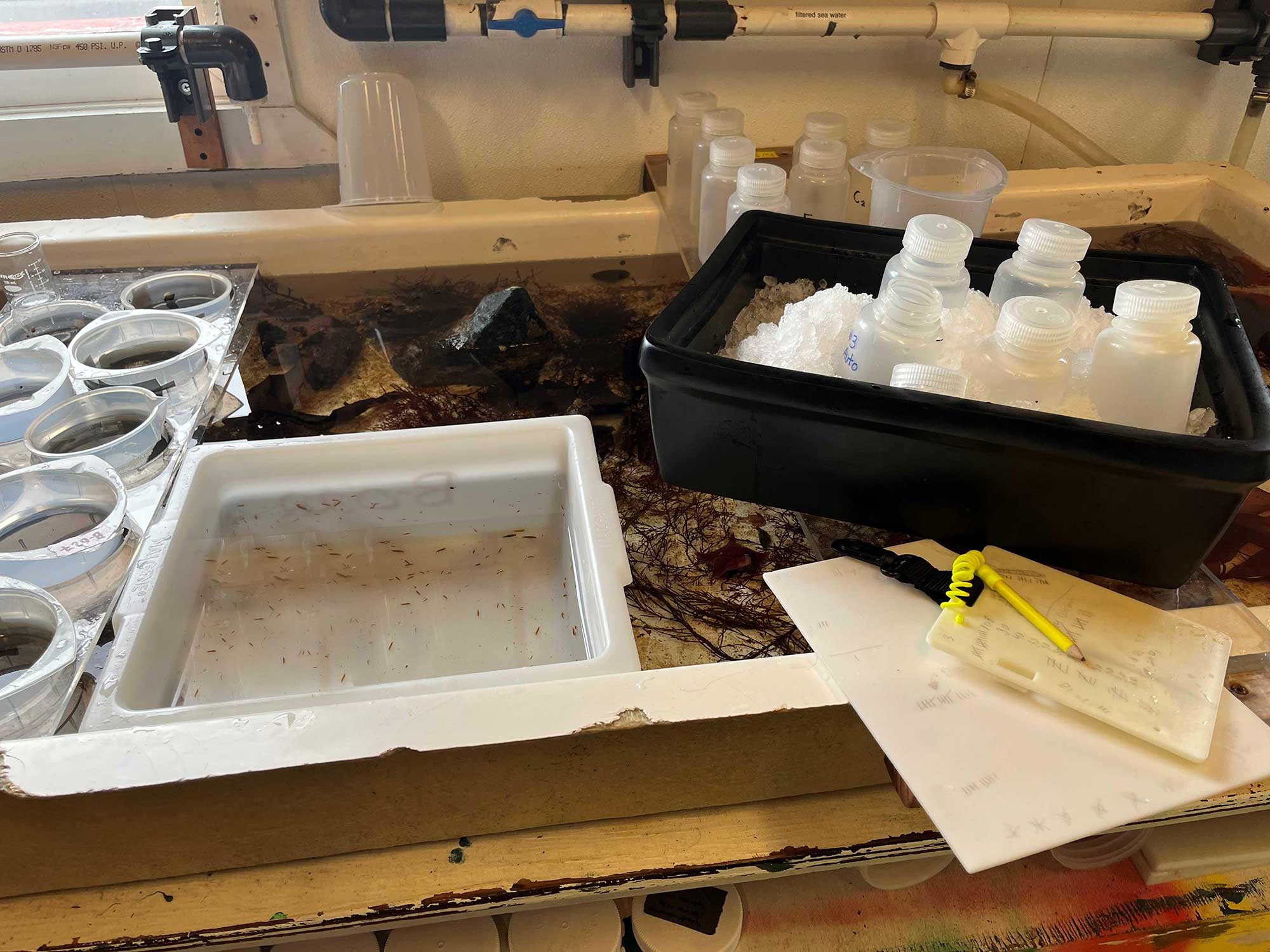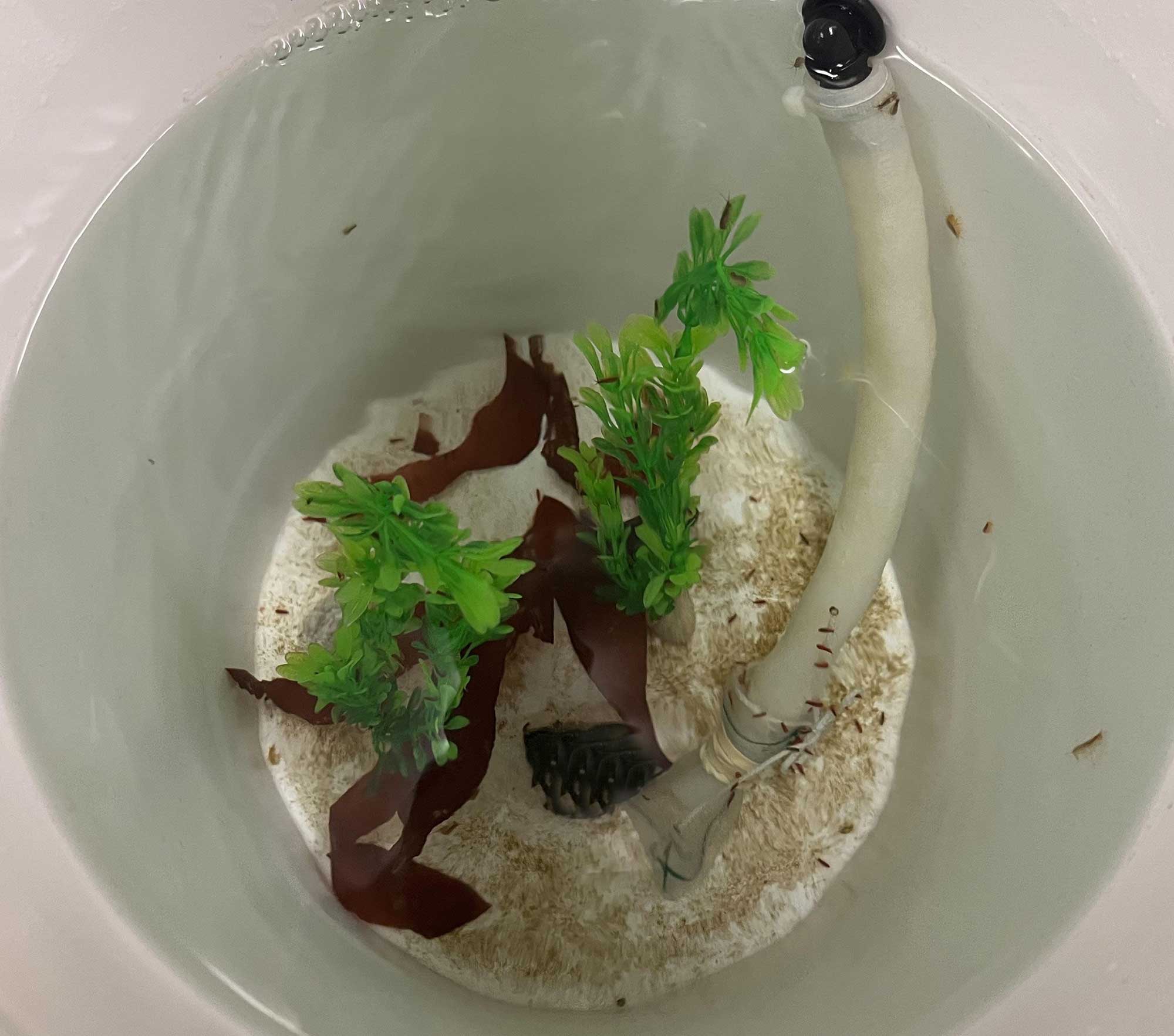
In the last several weeks, our team has discussed several of the tasks that needed to be completed before we could start our experiment: diving to collect samples, removing amphipods from algae, and sorting different amphipod species. These may seem like simple tasks, but we struggled to complete them this season.
As Chuck mentioned in his prior posts, the weather was unusually bad this January, which limited our ability to dive. When we could dive, one of our study species, Djerboa furcipes, proved itself to be very tricky to find. However, our UAB team is not easily dissuaded. After nearly two months of setting up and collecting, we finally caught enough amphipods to start our experiment!
Today, I am going to walk you through how we set up the final parts of our experiment. The last time we talked, I explained how we sort the specific amphipods we want from the other species that are commonly found here. The sorted amphipods live temporarily in special bottles that have mesh screening to allow seawater to flow in and out as they float in one of our aquarium tanks.
To officially start our experiment, we needed to move the amphipods from these special bottles into the experimental buckets. We start by pooling all of our bottles of one species into a tray. A set of twenty-four bottles are filled with some seawater and placed in an insulated tray full of ice similar to the set up in the picture above. From here, I carefully pipette five of the amphipods into a small beaker that I pour into the first bottle in the tray. I repeat this step until each of the bottles has five amphipods in it. Then, I fill each bottle again with another five amphipods but work in the opposite direction (starting with the last bottle and finishing with the first). I do this over and over again until I have the number of amphipods I want in each bottle. After the bottles are filled, I pour them into a random experimental bucket. For this experiment, we had to count a total of 6,648 amphipods! Wow, that’s a lot of amphipods!
This might seem like a tedious way to count our amphipods. Why don’t I just pipette the number I need in one step instead of going back and forth? We distribute our amphipods like this to try to make each of our buckets as even as possible. Filling all of the bottles together in small batches prevents me from accidentally filling one of the buckets with super large amphipods while filling another with extremely small ones. The goal is to make sure the amphipods in each bucket are as similar to each other as possible.

After our amphipods are in the buckets, we need to give them something to eat. Two artificial plants seeded with diatoms are added to each bucket. In addition to the diatoms, pieces of a tasty alga, Palmaria decipiens, are also added. You can see this red alga in the picture above. You may have noticed that our buckets are missing the containers we sewed together at the start of the season. We had some… unanticipated problems with the containers. But that’s science, baby. Sometimes you just have to roll with the punches when doing field work in a remote location. Now, we have sewn mesh covers over the outflow pipe to prevent any of our amphipods from escaping the experiment.
With all of our buckets fully loaded, we can start the experiment. We do this by turning on the CO2 and allowing our pH controllers to do their thing. The controllers sense the pH in the mixing tanks and slowly lower the pH over the course of two days to give our amphipods some time to acclimate to their new pH. And with that, our experiment is officially running! But our work isn’t over yet. Now, our work shifts into experiment maintenance: checking pH, running a spectrophotometer and titrator, and determining the seawater chemistry. Join me next time for a closer look on how each of these processes work.
A haiku for your consideration:
The bucket bottoms
Are living pieces of art
From colorful pods